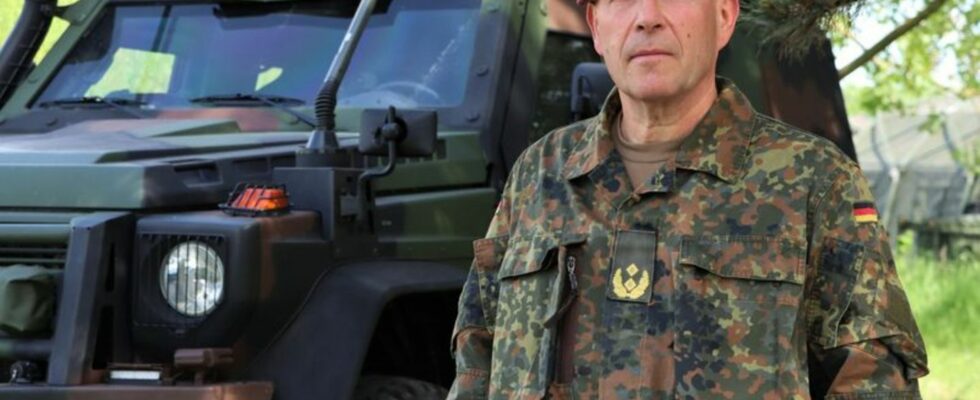defense
Paratrooper exercise in Romania begins
Major General Dirk Faust: His division controls the exercise with a total of around 4,500 participants in Hungary and Romania. photo
© —/Bundeswehr/dpa
NATO calls it the largest airborne operation in Europe since the Second World War: Paratroopers under German leadership practice how to liberate an airfield captured by the enemy.
NATO’s largest airborne exercise in Europe to date is intended to bring together paratroopers from several alliance states Send a signal of deterrence to Romania. The main part of the “Swift Response” maneuver will begin today under the leadership of the German Rapid Forces Division (DSK). Around 1,500 paratroopers are parachuting near the Romanian cities of Turda and Cincu to liberate an airfield that has been taken over by enemy forces, according to the scenario, as the Bundeswehr announced.
NATO is reacting to the changed security policy situation resulting from Russia’s war of aggression against Ukraine with a series of exercises currently underway under the name “Steadfast Defender”. A total of around 90,000 soldiers will be mobilized over several months to practice raising the alarm, moving large units of troops and defending against an attacker in combat. In Romania, the aim is to react quickly to the event of an attack with quickly deployable forces.
The assumption for the exercise is that attacking soldiers are already in Romania. “This enemy was brought to a halt by the Romanian forces. However, the enemy managed to capture an airport as part of an airborne operation – as a prerequisite for its further operations,” said Major General Dirk Faust, commander of the Rapid Forces Division (DSK). , the dpa before the exercise. “Our mission will now be to retake this airfield with our own forces. To do this, we will carry out a large-scale airborne operation.”
“Ready to use very quickly at any time”
The approximately 1,500 paratroopers from several NATO countries are supposed to jump into three so-called drop zones, i.e. drop zones for paratroopers, in order to begin the attack on the occupied airfield from there – as a prerequisite for further operations of their own.
“This is of course strategic communication. We are sending a very clear signal overall with the exercise “Steadfast Defender” that we are ready to deploy very quickly at any time, to bring forces into areas where they are needed and to deter any enemy from aggression,” said Fist. His division controls this exercise with a total of around 4,500 participants in Hungary and Romania.
All light and fast forces of the German Army are united in the Fast Forces Division. These include mountain troops, paratroopers and helicopter forces, but also the Special Forces Command (KSK). Faust also has a Dutch airborne brigade under his command. The 81st Romanian Brigade is also subordinate to the Rapid Forces Division and exercises regularly. She is involved in the maneuver.
Rapid Forces Division is tried and tested abroad
Soldiers from the Rapid Forces Division have repeatedly been deployed abroad in recent years, for example in Afghanistan and most recently in the evacuation mission in the midst of the bloody power struggle in Sudan. They can be used in a short time. “We’re talking about first forces after 24 to 48 hours and main forces after 72 to 96 hours,” said Faust. Germany keeps such associations on standby for national crisis preparedness, including the protection or rescue of Germans abroad.
Now national and alliance defense is becoming important again, probably the most important task of the Bundeswehr in the foreseeable future. Soldiers like the paratroopers deployed in Romania are considered “first-line forces” who take possession of so-called key rooms, key terrain and key infrastructure.
In Romania, their mission is also to enable an advanced supply point and to secure an evacuation point for civilians. The Bundeswehr said: “Air landings and landings with helicopters are trained under highly dynamic combat conditions in order to demonstrate the rapid deployment of assertive troops.”

